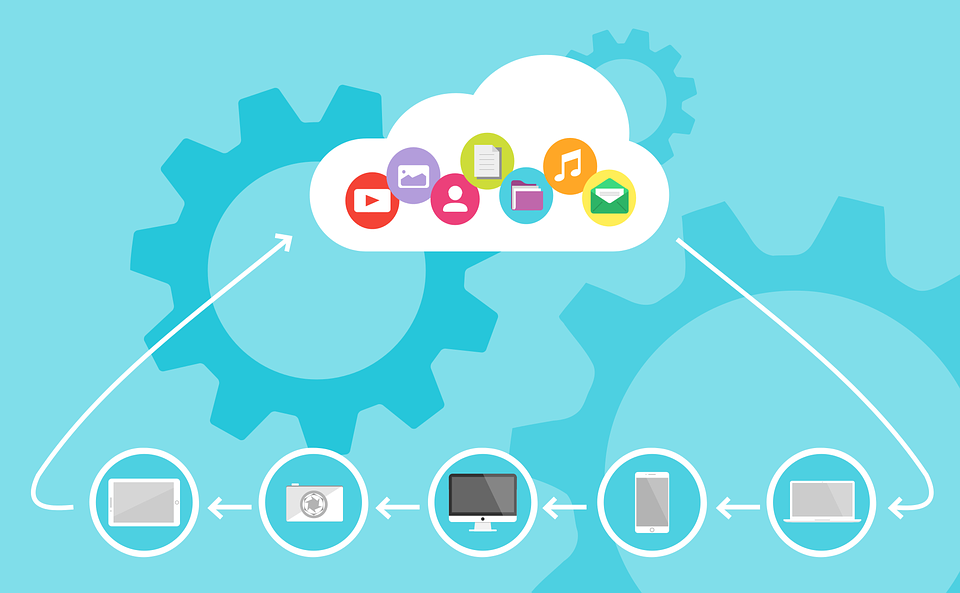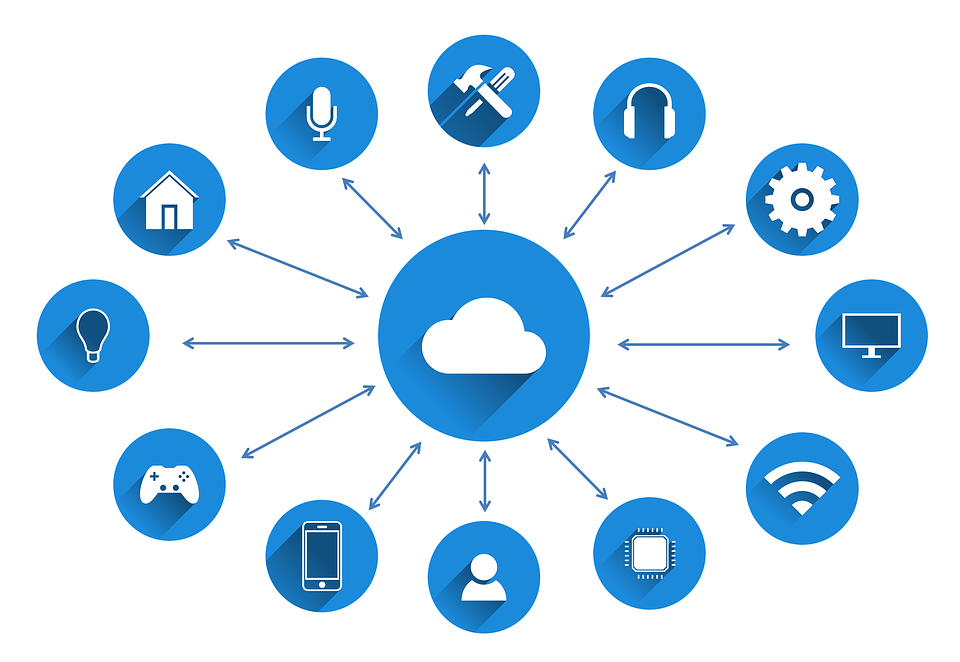The giants of the public cloud computing industry are extremely well known. Based on their usage, the top three vendors are AWS, Microsoft Azure, and Google Cloud Platform. They each have their own unique purposeful service offerings with their own set of strengths and weaknesses. Their offerings make them the preferred choice for certain projects. Enterprises decide on their cloud needs basis their requirement for a certain project and match applications and capacities with the service provider that best fits their needs. AWS plays to its strength by dominating the cloud infrastructure market owing to its early entrance in 2006 and therefore holding the major market position in the field. It boasts extensive and mature offerings and a colossal global consumer reach. But it is still considered intimidating because of its overwhelming service options with more than 20 categories and 90-plus services to offer. Its complex pricing also makes one wary before opting for its services.
Microsoft’s Azure comes next finding its loyal consumer base largely in enterprises that deploy Windows and other Microsoft software due to Azure’s integration with Microsoft tools and software. Although seeming completely “enterprise-ready,” common client reports cite services failing to meet expectations as the service experience feels “less enterprise-ready” as well as lacks management tooling.
Google Cloud Platform, although a distant third, has created an impact and is quickly expanding. Google Cloud specializes in computing and is specifically designed for cloud-native applications. In addition to its true commitment to open source and portability, Google Cloud also is the most cost-effective and user-friendly. Although it doesn’t offer as many services and has fewer datacenters globally compared to AWS and Azure, Google Cloud is quickly expanding and pushing for supremacy owing to the comprehensiveness of its offering, market strategy, global infrastructure, and momentum in its favor.
Google Cloud Platform plays to its strength by using Google’s underlying infrastructure, which is the backbone that makes Google itself great. Google continually strives to build better datacenters, build faster computers, and aims at pushing computer science further than it’s ever gone before. Over the last 14 years, not only has the company spent a lot of expertise in building up the hardware and infrastructure, it has also built up expertise in software to create highly scalable and reliable application that use the power of Google’s datacenters.
Simpler solutions

Google Cloud Platform constitutes a variety of different services and solutions that allow you to utilize the same software and hardware infrastructure that Google uses internally. A few of their 50-plus products include Google Compute Engine, Google App Engine, Google Container Engine, Google Cloud Bigtable, Google BigQuery, Google Cloud Functions, Google Cloud Datastore, Google Storage, Google Cloud CDN, Google Cloud DNS.
Although competing in a market dominated by AWS, Google Cloud takes an approach of its own. AWS has more than 200 services on its platform. Google offers lesser services but is definitely more focused. It focuses on user needs and strives every day to better their existing offerings while still exploring and innovating new offerings. Although constantly expanding and developing, the platform remains uncomplicated and user-friendly. For particularly this reason Google Cloud serves as a better and ideal option for newbies to get started with. Making available tutorials to help users understand the usage of its services and being the most cost-effective platform also adds to its appeal to new users.
As the makers themselves say, Google Cloud is engineered with enterprise solutions focused on making it as simple as it can get for its clients. The aim is to really make lives easier for developers by making it convenient and faster to build applications. The idea was to let enterprises concentrate on the core technology of the apps. So these services handle a lot of common tasks, as well as those tasks that would be difficult for developers to handle on their own.
Therefore BigQuery is designed to crunch terabytes of data for application builders. Cloud Endpoints helps build API’s on Google’s infrastructure using the same infrastructure that they use for Google Drive, YouTube, and Google+. Big Data solutions help capture, process, and analyze your data within a single platform. Also available, are their scalable and easy-to-use machine learning services like Cloud AutoML and CloudTPU to move beyond simple data analysis to find actionable insights even faster. The grid further inclines to other lower-level services like caching and queuing. The cloud platform also gives you access to a wide variety of other service offerings from Google. All of this is hosted on top of Google’s infrastructure and aims to provide to its end users the same level of reliability and security that Google expects for its own services.
Kubernetes services
Another much-acclaimed offering, a true technological innovation, is the Google Kubernetes Engine. Launched in 2015, Kubernetes Engine developed by Google is a fast, reliable, efficient, and secure way to run containerized applications in a clustered environment. GKE is based on Kubernetes and is an open source container management system available on Google Cloud. GKE is an open source platform for working with containers at scale. Google uses this platform to manage all its containers. It is a platform you can build on and extend. But at its core what Kubernetes gives you is a means to do deployment, an easy way to scale and it gives you portability. Google Cloud has a set of virtual machines to be optimized for running containers that can be managed using Kubernetes. It is designed to manage services and containerized applications using methods that provide reliability, scalability, and high availability. GKE is most commonly used by software developers or administrators for scalability or to match performance demands and in creating and testing new applications.
With GKE you can easily manage, update, and deploy your applications and services. The built-in Kubernetes Engine dashboard in the Google Cloud console helps you with monitoring and repairing crashed applications inside your deployments through automated repairs and replication strategies to ensure uninterrupted services for your application users. The auto-scaling feature allows you to scale conveniently to manage user traffic. GKE also offers portability across clouds and personal servers, which means you can freely move your applications out of Kubernetes Engine and run them anywhere Kubernetes is supported.
Few of us are aware that many of the popular applications and services that we use today are running on Kubernetes. There are three reasons for Kubernetes’ adoption. The first is speed — enabling developer productivity. Kubernetes helps in deploying to production in minutes. The second is scalability — with GKE it is a really efficient to scale out. Pokémon Go, for example, was the fastest app to reach $1 billion and Kubernetes was behind the scaling. It becomes the new standard when a technology becomes this commonplace because everyone expects all applications to meet this type of scalability and this type of development speed. And last but not the least it’s open — you use Kubernetes anywhere whether it’s on Google’s cloud or on-premises. Walmart is a very nice example of that. Walmart is using Kubernetes in their logistics across 200 warehouses. These are small IT closets with VMware on them and they are running Kubernetes on that.
Soaring higher
Google Cloud Platform is surging forward with great momentum in their service offerings and appears to have the right intent — making it ever so convenient for their users by scaling their services to match their needs in the most simplified and user-friendly way. Every offering of the platform is designed for the ease of its users staying true to the company’s stated purpose of the cloud platform. Google Cloud is highly secure, user-friendly, cost-effective, global, and constantly upgrading. It is designed for extreme durability and they undisputedly have one of the biggest networks in the world.
Making strides
Google Cloud Platform provides services to a wide range of businesses including media, retail, gaming, health care, and retail. We have biggies like Phillips, Charles Schwab, UNIQLO, PWC, Netflix, Spotify, HSBC, and Salesforce to name a few businesses currently using the cloud’s services. We see constant additions to the Google Cloud customer acquisition wing, which is a sign that Google Cloud is ticking off all the right boxes. Not just this, the sales and marketing teams at Google Cloud are aggressively targeting big wins. The teams’ relentless efforts are certainly showing results and making headlines.

We have the world’s largest ticket marketplace StubHub announce Google Cloud and Pivotal as its public cloud infrastructure providers. Also marking the entrance of e-commerce platforms to Google Cloud is Volusion, the only e-commerce platform built specifically for small and medium businesses. Twitter is set to move cold storage and Hadoop clusters to Google Cloud and Fitbit is moving to Google Cloud to innovate and advance its products and services.
Google Cloud Platform is helmed by Diane Greene, who points out that it’s not just sales and marketing that are expanding — partnerships are growing, too. A few recent additions are Ayla Technologies, which is set to integrate Google cloud services to its IoT platform. Confluent, a streaming data platform based on open source Apache Kafka, will partner with Google Cloud. By using a fully managed streaming data service, users can offload the operating burden of Apache Kafka and stream data at scale in real time to Google Cloud’s Big Data services, which include BigQuery, Cloud Machine Learning Engine, and TensorFlow. Object storage software provider Cloudian launched its HyperStore Test Drive on Google Cloud. Also forming new partnerships with Google Cloud are Aqua Security, Atos, Dell, and Spinbackup.
Google Cloud partners with some of the most trusted, innovative companies to help global enterprises innovate in entirely new ways. Google partners with the likes of SAP, Accenture, Pivotal, Intel, Cisco, Hubspot, Q42 to name a few. The platform has also recently joined forces with BC Platforms, well-known pillars in the field of genomic data management.
Google Cloud Platform: Soaring to supremacy?
To sum it up, despite currently being only a $4 billion-a-year revenue-generating platform and stacking third after AWS’s $21.2 billion a year and Microsoft’s Azure at $20.4 billion a year, Google Cloud Platform is making strides and shows great promise and potential to soar to cloud supremacy.



